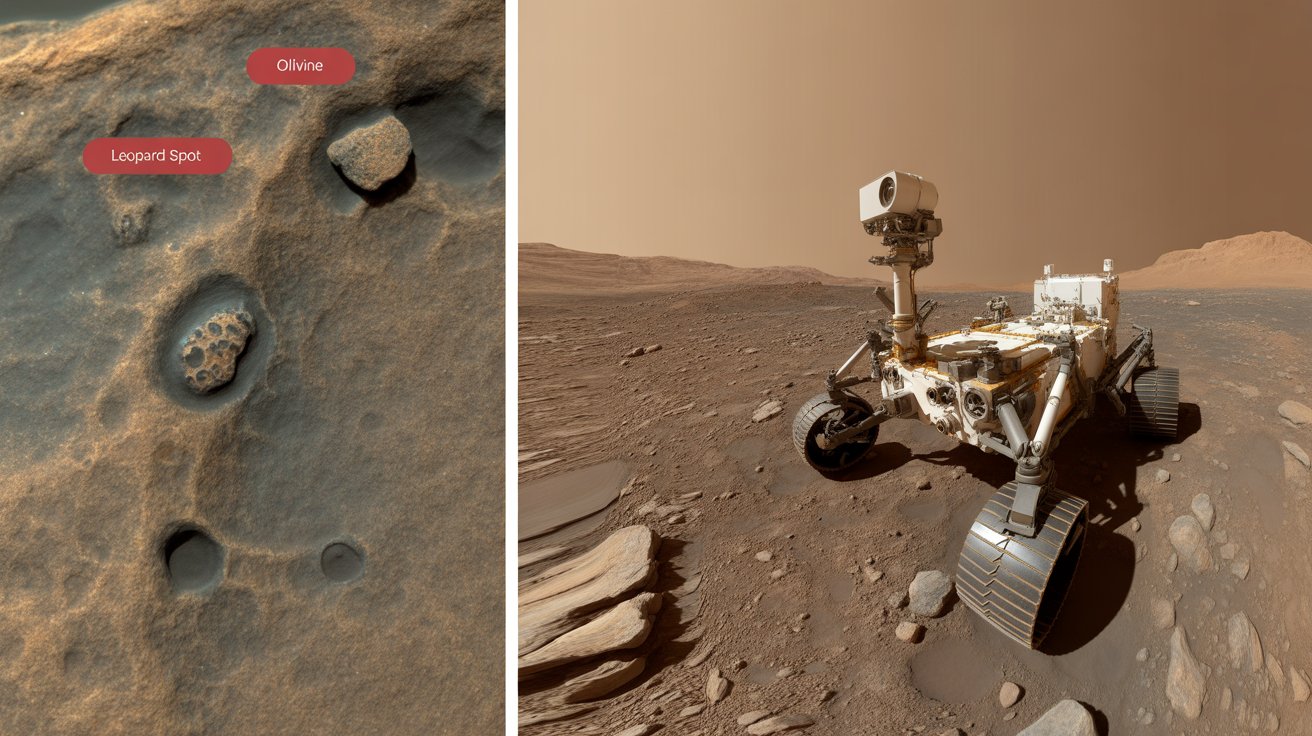NASA claims strongest evidence of life on Mars.
Introduction
Captivating worldwide interest, NASA revealed the most convincing proof of life on Mars in a historic disclosure. The Perseverance rover came to the conclusion, which has been regarded as a watershed in mankind’s search for life beyond Earth. At a special press briefing on Wednesday, September 10, 2025, NASA scientists discussed the discovery as a “possible biosignature.” This phrase implied the possibility of microscopic organisms as the source of the evidence. As a result, the news has generated excitement among both regular people and the scientific world.
A Unique Rock with Leopard Spots
The finding focused on a distinctive rock sample collected by the Perseverance rover in July 2024, at which point the rover had been exploring. Scientists think an enormous lake once lived in Jezero Crater, which holds the particular rock dubbed “Cheyava Falls” in an old riverbed.
Its peculiar appearance made this rock really distinctive. Little, dark specks matched with larger, ring-shaped blotches which mimicked the patterns of a leopard. Using the rover’s sophisticated instruments, this rock was closely studied over a year. The study exposed amazing facts about its internal structure.
Molecules and minerals indicate life.
Two specific minerals—vivianite and greigite—were discovered when the rock was investigated more closely. Usually connected with watery settings and microbiological activity on Earth are these minerals. These compounds are well-known to arise from chemical reactions that bacteria conduct for survival. Furthermore discovered in the rock specimen were organic molecules, including carbon-based ones.
The scientists were more intrigued by the unusual combination of minerals and organic compounds discovered in a single specimen. While such minerals could occasionally arise naturally, the precise composition inside “Cheyava Falls” pointed to microbial activity. Accordingly, the evidence was considered as a good lead toward detection of life.
The Quest for a ‘Biosignature’
Long directing the hunt for life on Mars, the phrase “biosignature” has guided us. A biosignature is a fossil, a distinctive chemical signature, or a mineral pattern perhaps produced by living entities. The main difficulty has always been, nevertheless, that various natural processes are also able of generating comparable signals.
Therefore, the officially declared signs were not regarded as conclusive evidence of life.
NASA officials stressed the need of more thorough testing. They added that only bringing the sample back to Earth—where more advanced lab equipment would enable thorough investigation—could provide the final verification. Thus, until that stage, the claim stays categorized as strong evidence instead than verified discovery.
A Long and Challenging Road
NASA already has strategies to bring Martian specimens back to Earth over the next few years. Such a goal, though, is known to be very difficult and expensive. Substantial time, cutting-edge technology, and money will be needed. The findings of the Perseverance rover are expected to remain under intense study and worldwide interest until such time.
Moreover, this find has brought fresh understanding of Mars itself. The rock called “Cheyava Falls” came from a newer area of Jezero Crater. This discovery implied that Mars could have been hospitable for living entities over a longer time frame than once thought. This paved new paths for more investigation and discovery on the Red Planet.
This implies for humankind what?
The import of this news has gone well beyond only science. Verified, this discovery would represent one of the biggest accomplishments in human history. It would change how people view their position in the cosmos. Understanding that life may not be exclusive to Earth but rather widespread would transform science, philosophy, and even culture.
Though BoxOfficeWala mostly concentrates on entertainment and box office news, this article was still thought of as important to share. Every component of human civilization would be affected by the finding of alien life. It would show how life is a recurring possibility inside the cosmos, not a rare or singular phenomenon.
This specific news story has reminded us of humankind’s progressive but purposeful trek into space. It has underlined how its riddles are continuously being disclosed even while the cosmos is vast. Once thought to be desolate and lifeless, Mars could have life instead. Perhaps, in remote locations, evidence of that life still remains to this day.
Conclusion
Perseverance’s finding has been called as the most convincing indication yet that Mars may have supported microbial life. NASA has underlined that final confirmation calls for more investigation. But the discussion has certainly been furthered by the high presence of vivianite, greigite, and organic molecules in the “Cheyava Falls” sample.
With the results still motivating, one can state with confidence that the NASA Announces Strongest Evidence of Life on Mars has become legendary scientific history. The find has pointed humanity toward new chances and reminded us that exploring is about changing our perspective on life in the universe as well as about identifying worlds. The 2025 disclosure will be noted as a watershed moment when humans approached closest to confirming life beyond Earth.
